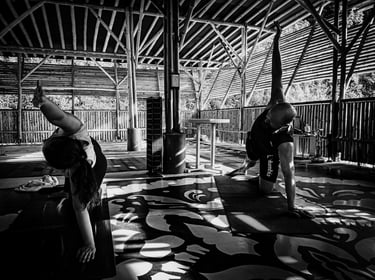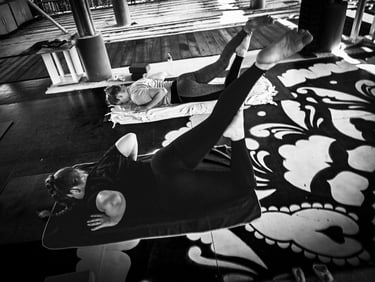Why Am I Tingling ?
If the tingling feels mild and fades when you adjust or relax, it’s generally harmless. Persistent or painful sensations, however, might indicate something more serious, like nerve compression or poor circulation, and it’s worth checking in with a doctor if that’s the case.
And what if your muscles shake or quiver during a challenging pose? That’s a sign of muscular fatigue - it means you’re working hard, and it’s usually a good thing!
Tingling sensations during yoga are more common than you might think and often nothing to worry about. This can happen during intense poses - like arm balances or inversions - where your muscles are working harder. When muscles engage deeply, they can temporarily reduce blood flow, which might cause that tingly or even slightly numb feeling.
But it’s not just about muscle engagement. Tingling can happen for a mix of reasons:
Improved Circulation : Yoga often involves stretches and compressions that play with circulation. When you release a pose, fresh blood rushes back into the area, which can create a tingling sensation.
Reoxygenation : Deep breathing improves oxygen levels in your blood. As tissues respond to this boost, you might feel subtle sensations, including tingling, especially in areas that were less active before.
Nervous System Activation: Certain poses can press on nerves - perhaps when sitting on your heels in Vajrasana. When the pressure eases, the nerve signals might feel like tingling or pins and needles.
Energy Flow : In yoga philosophy, tingling is sometimes seen as a release of blocked energy or prana. It’s your body’s way of adjusting to improved movement and circulation in places that might have felt “blocked”
Holding Poses : If a pose applies pressure to a specific area (e.g., sitting on heels in Vajrasana), it might restrict blood flow or compress nerves. Tingling may occur when the pose is released and circulation resumes.
Pregnancy : During pregnancy, hormonal changes can cause swelling and fluid retention, which may press on nerves and lead to tingling (like in carpal tunnel syndrome or sciatic compression). Gentle, dynamic yoga movements can help by improving circulation and relieving pressure.




More Insights
